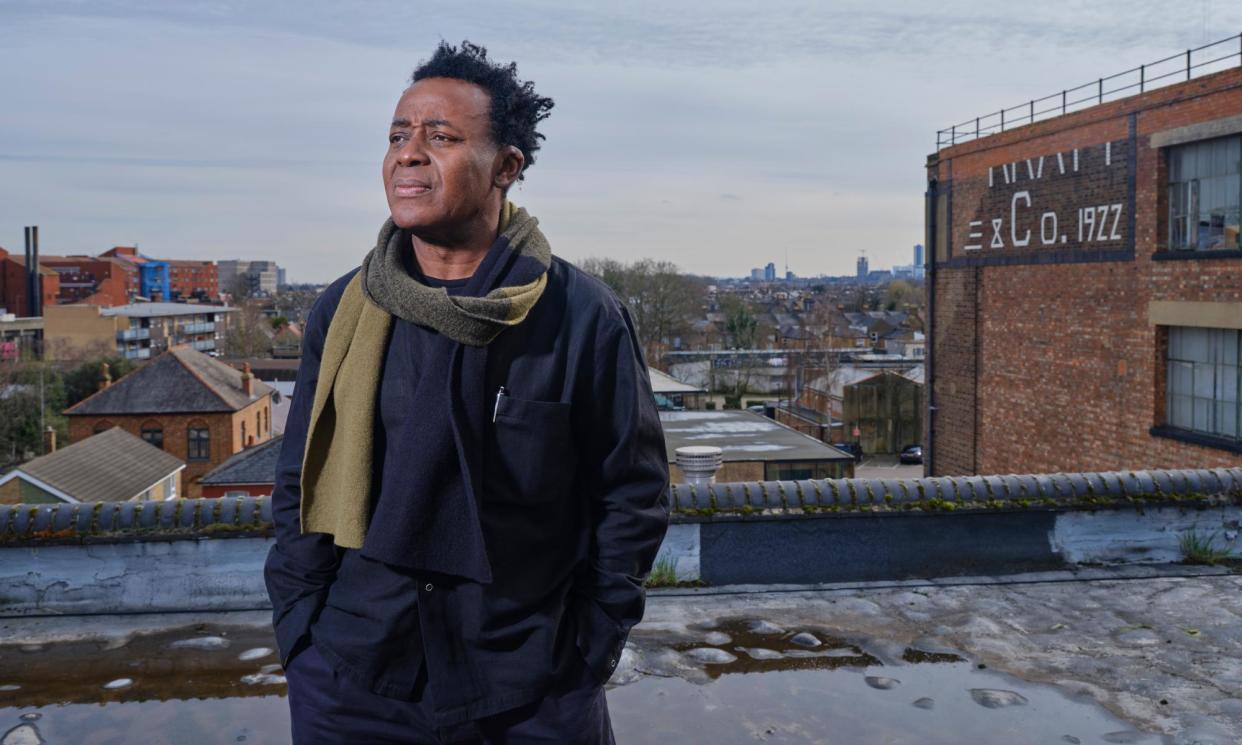‘War, refugees, destruction’: colonialism and conflict key themes of Venice Biennale

This year’s Venice Biennale is being billed as an event rooted in the now, in a world of conflict and division – or, as one newspaper put it, the celebration of global art will be full of “war, refugees, destruction”.
Another theme that runs through many of the pavilions is colonialism: both its legacy in the form of restitution debates, and Europe’s lingering presence – physically and psychologically – in those countries that were formerly colonised.
More than half a dozen of the pavilions taking part – including Ireland, Portugal, Brazil, the Netherlands, Ethiopia and the UK – contain art or artists who are wrestling with ideas of colonialism and its influence more than half a century after many states gained independence.
The Irish entry features a film made by Eimear Walshe, which combines ideas around the 19th-century land contestation and the current housing crisis in Ireland, while the Dutch pavilion features Congolese collective Cercle d’Art des Travailleurs de Plantation Congolaise who have secured a loan of a contested colonial-era artefact. The UK’s representative, John Akomfrah, has consistently interrogated ideas connected to colonialism since the early 1980s.
The Brazilian pavilion has been renamed the Hãhãwpuá pavilion, which refers to the name the Pataxó people use for the land that is now known as Brazil.
The team behind it say that that decision chimes with the Biennale’s theme of Stranieri Ovunque – Foreigners Everywhere, and is intended to highlight indigenous voices in a country that recently apologised to Indigenous groups for persecution during the dictatorship. “Many Indigenous peoples are still foreigners within Brazilian territory: perceived as outsiders,” says Gustavo Caboco, one of three indigenous curators of the pavilion.
The Biennale’s artistic director, Adriano Pedrosa, is also a Brazilian whose own curation has regularly spotlighted Indigenous artists and culture, while the 58-year-old has invited many artists from the global south to the Giardini and the Arsenale.
Brazil’s former coloniser, Portugal, has a pavilion curated for the first time by three women of afro-descent (Mónica de Miranda, Sónia Vaz Borges and Vânia Gala), and looks back at the European state’s legacy in Africa where it colonised Angola, Cape Verde, Guinea, Mozambique and islands in the Gulf of Guinea.
At its centre is the concept of the “creole garden”, which were the pieces of land enslaved people were allowed to cultivate. The garden – full of plants with a connection to Portugal’s colonial past – will take up the main space in the palazzo, and also references Amílcar Cabral, an agricultural scientist turned revolutionary leader who defeated Portugal in Guinea-Bissau.
De Miranda said: “The forest was always the place that [Cabral] was safe and able to plan the strategy to defeat the colonial power, so for us the forest is a place of refuge as well.”
The Ethiopian pavilion has a special significance: it’s the first time the country has taken part at Venice and the invitation to came from Italy, a state that occupied it for five years but never managed to colonise it.
Its curator, Lemn Sissay, said the presence of Ethiopia at the “Olympics of the art world” was a significant moment for the African nation, which makes it harder for countries like Britain that hold its artefacts to retain them.
The Nigerian pavilion has an even stronger connection to the restitution debate: it is being curated by Aindrea Emelife, the curator of modern and contemporary art at Mowaa, the Museum of West African Art, which has been at the forefront of the debate over the return of the Benin bronzes.
Emelife said the eight artists taking part – including Toyin Ojih Odutola, Precious Okoyomon and Yinka Shonibare – have been asked to create work about the “potential” of Nigeria, from the colonial era to the present day and into the future.
“There’s definitely a post-colonial element to what the artists are making,” she said.
“If you think of moments of optimism for any nation post-independence, there is this galvanising force, so it’s natural that that comes to play. But the artists who are discussing colonialism are also trying to resist it … and not repeat the mistakes.”


